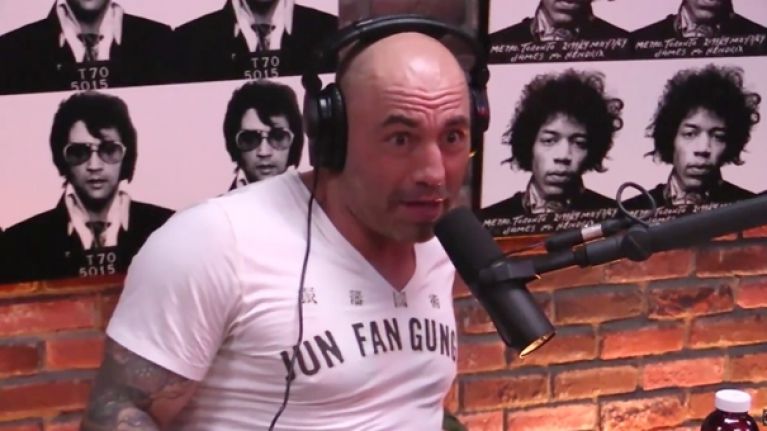For all the ways to market your brand with influencers, few are more intriguing than podcasts. Like live streams, podcasts allow for authentic conversations among the hosts, but with an added bonus of planning and production. Whereas a live stream always has an element of risk, in that only so much can be planned, a podcast can add layers of post production effects and retakes to ensure a consistent product, without compromising its stripped down, upfront essence. Podcasts also have the benefit of being online only, shared through social media and podcast specific sites or listings.
One might argue that a podcast is just a modern replacement for radio, and thus is not worthy of a noteworthily different approach. Others might argue that podcasts are dead, dying, or will die before any value can be extracted. No one can predict the future, but those opinions have some serious data to contend with.
Podcast penetration and popularity
For starters, according to Edison Research, over 44 percent of Americans have listened to podcasts, or roughly 124 million people. 48 million people listen to podcasts weekly, 70 percent of which are listened to on a mobile device. Considering the trend of subscription services that offer little to no intrusive advertising, the burgeoning popularity of podcasts over radio and other forms of mobile audible entertainment is not surprising.
Adoption of podcasts is aided by the rapid growth of influencers making them as well. On the Julius platform, we have over 2000 influencers tagged with podcasting, and there are surely more in production. Some notable examples include Malcolm Gladwell, Joe Rogan, and Tyler Oakley. In addition, some of the most popular podcasts come from brands themselves, like The New York Times or HowStuffWorks.
The explosive popularity of podcasts can also be attributed to the low barriers to entry: all you need is a microphone. While this means a lot of unlistenable and low quality podcasts settle at the bottom of the barrel, it also enables a wide variety of topics to be explored and people to be represented. The breadth of topics explores means podcasts can easily target niches of all kinds, from ancient roman history to relationship advice.
Hyper targeting with podcasts
Hyper targeting, made possible by the format of podcasts and the virtues of social media, means podcasts are ideal vehicles for advertising. Bear in mind that not do most podcast listeners not mind sponsored content in their podcasts, over 94 percent of monthly listeners use social media consistently.

Joe Rogan, the prolific podcaster and color commentator for the UFC
A podcast that broadcasts to a specific niche, that can identify its audience, is a prime vehicle for influencer marketing. Take for example The Joe Rogan Experience, a podcast that caters to young adult males that like MMA, weed, comedy, and pop philosophy. A few of its sponsors include Onnit (the supplement company behind products like AlphaBrain and Shroomtec), MeUndies, and ButcherBox. These brands identified their target demographic and used Rogan, as an influencer, to represent them by sponsoring his show.
The nature of podcasts, as described above, is such that extremely niche and finely tailored topics attract equally as niche audiences. True crime podcasts, for example, attract a distinct type of consumer from history podcasts. As Nielsen found this year, podcast listeners can be tied to specific purchasing behaviors based on the genre they're interested in. Thus, identifying the target consumer for your brand can be closely tied to the podcasts they listen to, and the people behind them.
The hybrid influencer
While some brands have separate partnerships with Rogan as an influencer, brands like Squarespace and Blue Apron have deals with his podcast only. Brands that look to capitalize on the audience of an influencer without a fully involved influencer campaign can adopt this sort of hybrid approach, depending on their intent and marketing philosophy.
Thus, a podcast is in itself an influencer entity, separate but conjoined to its host. Rogan, for example, boasts his a huge following derived both from his tenure on TV and his podcast. It isn't a stretch to suggest that fans of Fear Factor and the UFC are distinct from fans of his comedy and opinions on aliens. In a more narrowly tailored example, Dan Carlin, host of the extremely popular Hardcore History podcast, is also a fervent commentator on politics and essayist. Whereas his show focuses on deep dives into modern history, his social media content and his persona beyond have broader interests.
Just FYI,
I'll be speaking at Harvard University on Saturday November 3, 2018 at a conference hosted by @ministryofideas called Sound Education.Anyone interested can learn more and register at https://t.co/mT3a0Q1EBG.— Dan Carlin (@HardcoreHistory) August 2, 2018
His show and his persona attract different but closely related interests, and consequently similar yet distinct audiences. Using his podcast as a vehicle for marketing, with the host as its representative, makes podcasts a unique form of influencer marketing that goes beyond both the traditions of intrusive plugs and social media posts. What makes it distinctly influencer based is that the show's content often depends on the host, and the shows only exist through digital media.
Podcasts vs. live streaming: coexistence is possible
Though podcasts and live streams occupy separate spaces, for the purposes of advertising the approach and considerations may be the same. Live streams in the general sense are not restricted to a topic nor bound to a certain audience, but the format is often used for that purpose. Podcasts, on the other hand, are almost always bound, at the very least, by the interests of the host or sponsoring party. Either way, each attract a specific demographic with specific behaviors to be identified and marketed to.
Podcasts, like live streams, are an easy way to broaden engagement and diversify content for an influencer of any kind. Much like radio, there are so many creative ways to approach podcast content, that pinning a brand to an influencer beyond the occasional plug can be a versatile and unique way to market your brand, just like a live stream.
Thanks for reading. If you liked this insight, be sure to to follow us on Twitter, Facebook, and LinkedIn for more influencer marketing news, analysis, and related content.
-1.png?width=239&name=Julius%20By%20Triller%20-%20Wordmark%20-%20Purple%20(1)-1.png)







